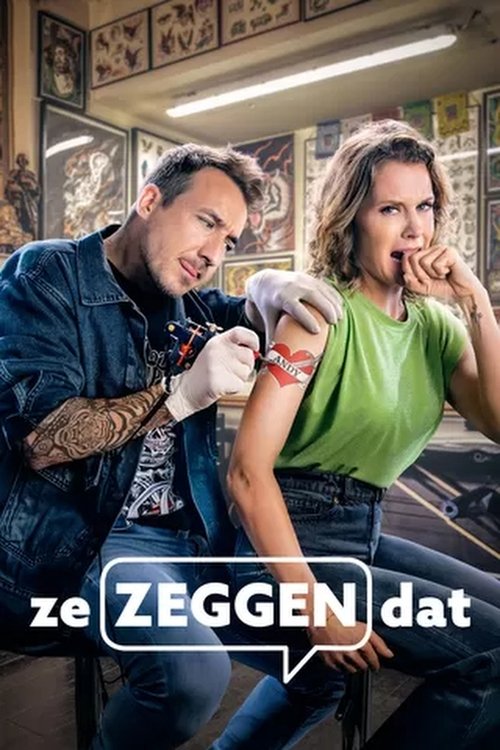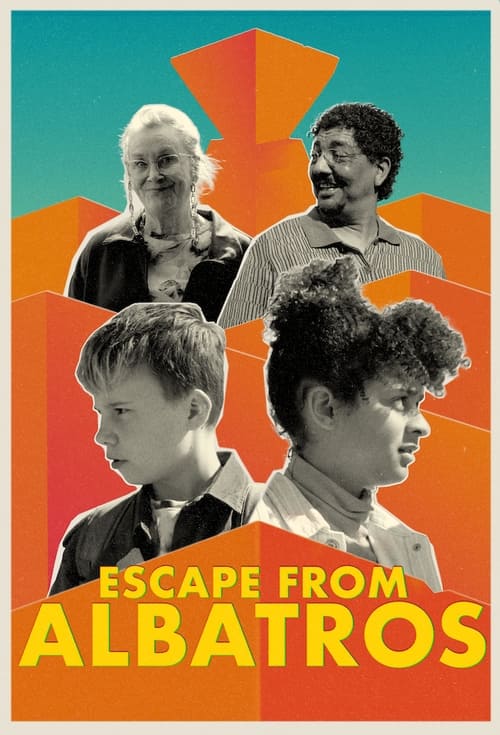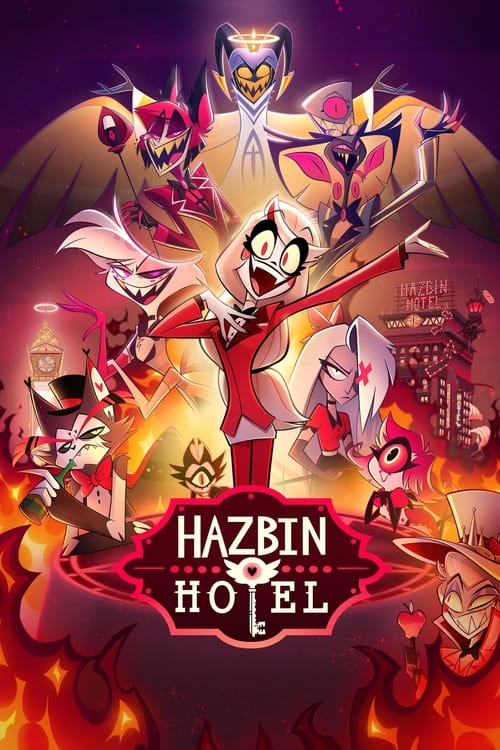
Ask Your Own Question
What is the plot?
In the opening scene of "Episode 2," Lisa is seen waking up in her small, cluttered apartment, the morning light filtering through the curtains. She stretches and glances at her phone, which shows a series of missed calls from her best friend, Mia. The tension in her face reveals her anxiety about their recent fallout. Lisa quickly gets ready, her movements hurried and distracted, as she prepares for a day filled with uncertainty.
As Lisa steps out of her apartment, she is greeted by the bustling sounds of the city. She walks to a nearby café, where she usually meets Mia. The café is lively, filled with chatter and the aroma of freshly brewed coffee. Lisa sits at their usual table, her eyes scanning the entrance, hoping to see Mia. When Mia finally arrives, there is an awkward silence between them. Lisa's heart races as she tries to gauge Mia's mood, feeling the weight of their unresolved issues.
The conversation starts off tense, with both women avoiding the main topic of their disagreement. Lisa attempts to lighten the mood with jokes, but Mia's responses are curt and distant. Eventually, Lisa musters the courage to address the elephant in the room, asking Mia why she has been avoiding her. Mia's expression shifts from annoyance to hurt as she reveals her feelings of betrayal over a secret Lisa kept from her. The emotional intensity escalates, and Lisa's frustration boils over as she defends her actions, insisting she had good reasons.
After their heated exchange, Mia storms out of the café, leaving Lisa feeling defeated and alone. The camera lingers on Lisa's face, capturing her mix of regret and determination. She decides to take a walk to clear her head, wandering through the city streets, reflecting on her choices. As she walks, she encounters various people, each interaction highlighting her internal struggle and desire for connection.
Later, Lisa receives a text from Mia, suggesting they meet again to talk things over. A flicker of hope ignites in Lisa, and she quickly agrees. The scene shifts to a park where they meet, the atmosphere more relaxed than before. They sit on a bench, and Lisa opens up about her fears and insecurities, revealing a vulnerable side that Mia had not seen before. This moment of honesty begins to bridge the gap between them.
As they talk, a sudden commotion nearby catches their attention. A group of people is gathered around a street performer, and the energy shifts as they both get drawn into the spectacle. The performance is lively and engaging, and for a moment, the tension between them dissipates. They share a laugh, and the warmth of their friendship begins to resurface.
However, the moment is short-lived as a confrontation breaks out among the crowd. A man shouts angrily at another, and the situation escalates into a physical altercation. Lisa instinctively grabs Mia's arm, pulling her away from the chaos. The adrenaline rush heightens their emotions, and they find themselves in a tight embrace, both shaken by the unexpected violence.
After the confrontation subsides, they retreat to a quieter part of the park, where they can process what just happened. The adrenaline still coursing through them, they share a deeper conversation about trust and vulnerability. Lisa apologizes for her past mistakes, and Mia acknowledges her own shortcomings. This moment of mutual understanding solidifies their bond, and they agree to work on their friendship moving forward.
The episode concludes with Lisa walking home, a sense of relief washing over her. She reflects on the day's events, feeling a renewed sense of hope for her relationship with Mia. The camera captures her smiling softly as she enters her apartment, the weight of the day lifting as she closes the door behind her.
What is the ending?
In the ending of "Lisa," Season 2, Episode 2, Lisa confronts her fears and insecurities, leading to a pivotal moment of self-acceptance. The episode concludes with her making a significant decision about her future, while her relationships with her friends and family evolve, showcasing growth and understanding.
As the episode unfolds towards its conclusion, the scene shifts to a dimly lit café where Lisa sits alone, her fingers nervously tapping on the table. The atmosphere is thick with tension as she reflects on the events that have transpired. Flashbacks of her recent struggles play in her mind--moments of doubt, conflict with friends, and her ongoing battle with self-image. The camera captures her furrowed brow and the way her gaze drifts to the window, where rain begins to fall, mirroring her internal turmoil.
Suddenly, her best friend, Mia, bursts through the door, shaking off the rain. The warmth of their friendship is palpable as Mia approaches, concern etched on her face. She sits down across from Lisa, and the two engage in a heartfelt conversation. Mia encourages Lisa to embrace her true self, reminding her of the strength she possesses. This moment serves as a catalyst for Lisa, igniting a spark of determination within her.
The scene transitions to a montage of Lisa taking small but significant steps towards self-acceptance. She is seen trying on different outfits in front of a mirror, experimenting with her style, and smiling at her reflection for the first time in a long while. The music swells, underscoring her journey of self-discovery. Each outfit represents a layer of her personality that she is beginning to embrace, symbolizing her growth.
As the episode nears its climax, Lisa attends a gathering with her friends. The atmosphere is lively, filled with laughter and music. However, Lisa feels a sense of apprehension as she enters the room. The camera captures her hesitance, but as she scans the crowd, she spots Mia and other friends who greet her with open arms. This moment of acceptance from her peers bolsters her confidence.
In a pivotal scene, Lisa takes the stage to share her thoughts with the group. Her voice trembles at first, but as she speaks about her journey and the importance of self-love, her confidence grows. The audience listens intently, and the camera pans to their supportive expressions. This moment signifies a turning point for Lisa, as she realizes that vulnerability can lead to strength.
The episode concludes with Lisa stepping outside into the night, the rain having stopped. She looks up at the sky, a sense of peace washing over her. The final shot captures her smiling softly, embodying a newfound sense of self-acceptance. The screen fades to black, leaving viewers with a sense of hope and the understanding that Lisa's journey is just beginning.
In summary, the fates of the main characters are intertwined with themes of friendship, acceptance, and personal growth. Lisa emerges from her struggles with a renewed sense of identity, while Mia's unwavering support highlights the importance of companionship in overcoming challenges. The episode closes on a hopeful note, suggesting that while the journey may be ongoing, Lisa is now equipped to face whatever comes next.
Is there a post-credit scene?
In "Episode 2" of season 2 of the show "Lisa," there is indeed a post-credit scene. The scene opens with a dimly lit café, where Lisa is sitting alone at a table, her expression contemplative. She stares into her coffee, swirling the liquid absentmindedly, lost in thought. The atmosphere is quiet, with soft jazz music playing in the background, creating an intimate yet melancholic mood.
As the camera zooms in on her face, we can see the weight of her recent experiences etched in her features. She reflects on the challenges she has faced, particularly her struggles with relationships and self-identity. The scene captures her vulnerability, showcasing a moment of introspection that contrasts with the more chaotic events of the episode.
Suddenly, the door to the café swings open, and a gust of wind rushes in, causing her to look up. A familiar figure enters--it's her friend Mia, who has been a source of support throughout the series. Mia's entrance brings a spark of energy to the scene, and she approaches Lisa with a bright smile, holding a small gift-wrapped box.
Mia sits down across from Lisa, and the two share a warm, albeit slightly awkward, moment of silence. Lisa's expression shifts from pensive to curious as Mia pushes the box toward her. "Open it," Mia encourages, her eyes twinkling with excitement.
Lisa hesitates for a moment, her fingers brushing against the wrapping paper, before she begins to unwrap it. As she reveals a beautiful, handcrafted bracelet, her face lights up with surprise and gratitude. The bracelet symbolizes their friendship and the support they provide each other through life's ups and downs.
The scene closes with Lisa putting on the bracelet, a smile breaking through her earlier somber mood. The camera pulls back, capturing the two friends laughing and chatting, the warmth of their bond contrasting with the earlier solitude. The screen fades to black, leaving viewers with a sense of hope and connection, hinting at the importance of friendship in navigating life's challenges.
How does Lisa's relationship with her parents evolve in this episode?
Throughout the episode, Lisa struggles with her parents' expectations regarding her academic performance. They express disappointment when she receives a lower grade than expected, which causes Lisa to feel misunderstood and pressured. This emotional strain leads to a pivotal moment where Lisa confronts her parents about their unrealistic expectations, seeking validation for her efforts.
What conflict arises between Lisa and her best friend in this episode?
In this episode, Lisa faces a significant conflict with her best friend, Sarah, as they disagree on how to handle a group project for school. Lisa feels that Sarah is not contributing enough, while Sarah believes Lisa is being overly controlling. This tension escalates, leading to a heated argument that tests their friendship.
What new character is introduced in this episode, and how do they impact Lisa's life?
A new character, Jake, is introduced in this episode as a transfer student. He quickly becomes a source of intrigue for Lisa, who finds herself drawn to his laid-back attitude and artistic talents. Jake's presence challenges Lisa to step out of her comfort zone, as he encourages her to explore her own creative interests, leading to a budding friendship.
What specific event causes Lisa to question her self-identity in this episode?
During a school talent show, Lisa decides to perform a song she wrote, but when she sees her classmates' reactions, she begins to doubt her abilities. The mixed responses from the audience, particularly a dismissive comment from a popular student, lead Lisa to question her self-worth and whether she truly belongs in her social circle.
How does the episode explore Lisa's internal struggle with anxiety?
In this episode, Lisa's anxiety is portrayed through her preparation for the talent show. As the performance date approaches, she experiences panic attacks and self-doubt, which are visually represented by her pacing and fidgeting. The episode delves into her internal monologue, revealing her fears of failure and the pressure she feels to meet others' expectations, ultimately culminating in a moment of vulnerability before her performance.
Is this family friendly?
In "Lisa," season 2, episode 2, there are several elements that may be considered objectionable or upsetting for children or sensitive viewers.
-
Emotional Conflict: The episode features intense emotional scenes where characters experience significant personal struggles, which may be distressing for younger audiences.
-
Family Tension: There are moments of conflict between family members that could be uncomfortable, showcasing arguments or misunderstandings that might resonate negatively with children.
-
Themes of Loss: The episode touches on themes of loss and grief, which could be heavy for sensitive viewers, especially younger children who may not fully understand these concepts.
-
Mature Discussions: Some conversations may include mature themes or language that could be inappropriate for younger audiences.
-
Visual Imagery: There may be scenes that include visual representations of emotional distress or conflict that could be unsettling.
These aspects contribute to a narrative that, while rich and engaging, may not be suitable for all viewers, particularly children or those who are sensitive to emotional or familial turmoil.

































